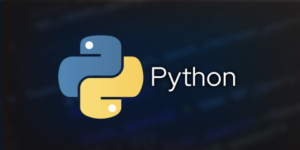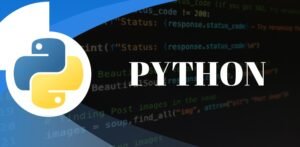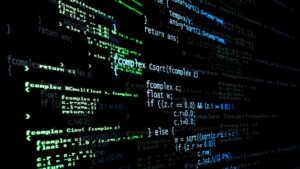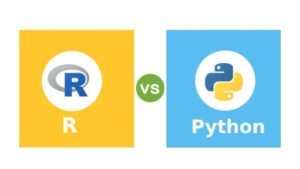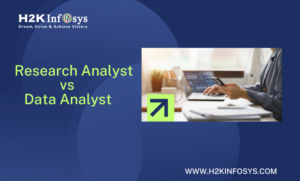Data science job interviewing is a talent in and of itself. Candidates who can combine their strongest technical talents with interview expertise are often the ones who land the jobs, rather than those with the strongest technical skills alone.
Despite the fact that data science is a broad area, certain subjects frequently come up in interviews. Therefore, we’ve put up a list of frequently asked questions in data science interviews, along with their responses. Check out the Data science online training to learn more.
Q1. Supervised Learning vs. Unsupervised Learning: What’s the Difference?
The type of training data provided to supervised and unsupervised learning systems varies. While unsupervised learning uses unlabeled data and the system’s ability to identify patterns, supervised learning uses labelled training data.
Q2. What Is Logistic Regression?
Predictive analysis includes the use of logistic regression. A logistic regression equation is utilised to determine the associations that exist between a dependent binary variable and one or more independent variables.
Q3. What Is a Decision Tree?
Decision trees are a method for categorising data and figuring out if a system would likely produce particular results. The root node is the location at the base of the tree. Based on the many choices available at each level, the root node divides into decision nodes. Lead nodes, which show the effects of each decision, flow from decision nodes.
Q4. What Is Pruning in a Decision Tree Algorithm?
The technique of removing non-critical subtrees from a decision tree helps prevent overfitting of the data being considered. Pre-pruning is the process of pruning a tree while it is still being built, using metrics such as information gain or the Gini index. Post-pruning is the process of pruning a tree after it has been created, starting from the bottom.
Q5. Explain K-Fold Cross-Validation.
The method of cross-validation is employed to assess a machine learning model’s effectiveness. The parameter denoted as “k” counts the number of groups into which a dataset can be divided.
The complete dataset is first randomly jumbled to begin the process. After that, it is split up into k groups, or folds. Every distinct fold is subjected to the following process:
- Designate the remaining k-1 folds as the test set and one fold as the test fold.
- Start using the training set to train the model. Train a new model that is unrelated to the models that were used in earlier cross-validation cycles for every iteration.
- Save the outcome of each iteration and validate the model on the test set.
- To get the final score, take the average of the outcomes from each iteration.
Q7. Explain the Random Forest Model. How Do You Build a Random Forest Model?
A machine learning algorithm and a type of supervised learning is called a random forest model. It is most frequently applied to problems involving classification and regression. The steps to construct a random forest model are as follows:
- Choose n records from a collection containing k records.
- Create distinct decision trees for every one of the n data variables that are being examined. For every one of them, a predicted outcome is obtained.
- Every outcome is subjected to a voting algorithm.
- The outcome that receives the most number of votes is the forecast.
Q8. What Is the Difference Between Univariate, Bivariate, and Multivariate Analysis?
In univariate analysis, only one variable is examined. Two or more variables are compared in bivariate and multivariate analyses, respectively.
Q9. Can You Avoid Overfitting Your Model? If Yes, Then How?
Yes, It is possible for data models to become overfit. To that end, the following methods can be applied.
- Increase the amount of data in the dataset under study to facilitate the analysis of the correlations between the input and output variables.
- To determine important features or parameters to be investigated, use feature selection.
- Use regularisation strategies to lessen the volatility in the outcomes a data model generates.
- Occasionally, datasets are stabilised by adding some noisy data. We call this data augmentation.
Q10. What Feature Data Science Selection Methods Are Used To Select the Right Variables?
Some of the methods for feature selection in data analysis include the following:
- Pearson’s Correlation
- Chi-Square
- Recursive Feature Elimination
- Backward Elimination
- Lasso Regression
- Ridge Regression
Q11. How Would You Approach a Dataset That’s Missing More Than 30 Percent of Its Values?
The amount of the dataset will determine the strategy. The quickest way, if the dataset is big, would be to just eliminate the rows that have the missing values. The size of the dataset means that it won’t have an impact on the model’s capacity to provide results.
It is not feasible to just remove the values if the dataset is small. In that instance, it is preferable to determine the feature mean or mode and enter that value in the fields where it is absent.
Utilising a machine learning system to forecast the missing variables is an additional strategy. Unless there are entries with a very large deviation from the rest of the dataset, this can produce reliable findings.
Q12. Explain Dimensionality Reduction and Its Benefits.
The technique of removing superfluous variables or features from a machine learning environment is known as dimensionality reduction. Reducing dimensionality has the following advantages:
- It lowers the amount of storage needed for machine learning initiatives.
- Analysing the output of a machine learning model is simpler.
- When the dimensionality is reduced to two or three factors, 2D and 3D visualisations become conceivable, making the results easier to see.
Q13. If an Interviewer Asks, “Why Should We Hire You as a Data Scientist?” Then How Should You Answer?
Using examples of the many data analysis techniques and resources you are acquainted with, explain what makes you an expert data scientist. Next, discuss the needs of the business and how you may use those skills to help solve some of its most urgent problems.
Conclusion
To learn more about Data science, check out our Data science online course.









